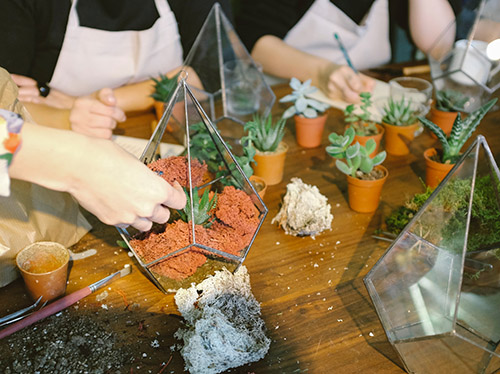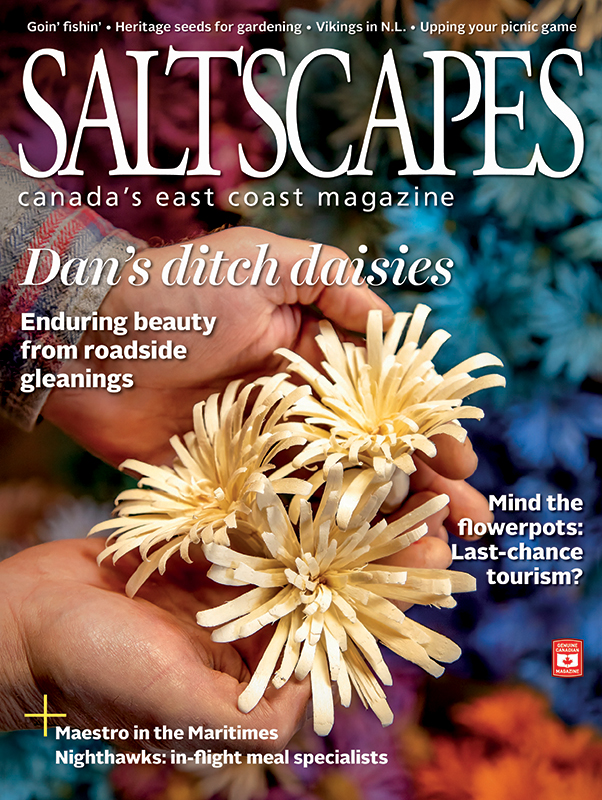For neurologist Dr. Jock Murray, medicine is more than just science
Growing up in Pictou, NS, Jock Murray was supposed to go into the printing and newspaper business. At least, that’s what his family—owners of Advocate Printing (which prints this magazine)—expected of him. But a teacher recognized his talent for drawing and painting, and that led him away from a career in newspapers, and eventually to medicine.
Over the course of a near 50-year career, he would become one of the world’s leading multiple sclerosis researchers, the founder of the MS clinic at Dalhousie University and the author of hundreds of papers and book chapters. Earlier this year, he was even inducted into the Canadian Medical Hall of Fame.
Murray got his start in family practice—something that influenced him greatly. “When I finished seeing patients after 40-some years,” he says, “I was just as excited in the last week to sit and talk to them as I was when I first started.”
He’s retired from practice now, but is hardly sitting around. He’s the president of the Samuel Johnson Society in the UK, and continues to paint and write. He’s also an inveterate collector, with a basement full of curiosities such as a Japanese medical doll, parts from old X-ray machines and his original black doctor’s bag.
I CAME FROM Pictou, and we were a family of 10. I started—as the other kids did—doing janitor work for the family business. Then I was able to do the melting of lead for linotype, and then I learned to use the linotype and the presses. Dad’s idea was that I would work my way through, as he did, learning all aspects of printing and publishing.

But one of my high school teachers suggested I do medical art. In those days, when you did an experiment in chemistry or whatever, you would have to draw the experiment, and most kids would do a little stick figure with a beaker and flame or whatever. I’d do this elaborate drawing with everything shaded. I didn’t actually understand the chemistry experiment, but I had great fun doing the drawing. And it was through medical art that I got interested in medicine. So I went to St. F-X [St. Francis Xavier University] for pre-med and then came to Dalhousie.
I was also in the Navy—I was an officer cadet in the University Naval Training Division, and later an officer—and a friend of mine knew Janet. We went out on a date, and I thought she was one of the most interesting people I’d ever met, and I still feel that way. We’ve been together now for 54 years.
By the time I finished medical school, Janet and I had two children, and I took over a practice in Nashwaaksis, which was then a small village outside Fredericton. I was about 26, and the only family doctor there. I began to learn that I really liked children, and I really liked the elderly—and that even though I loved suturing, I didn’t want to be a surgeon.
But being a family practitioner on your own doesn’t give you any personal or family life. I loved the work, but the major challenge was always time. I liked to take the time that everybody needed, and as a result my day was extremely long. So I never saw my kids, and I had no personal life. I didn’t do anything except work. I realized I would have to do one of two things: either go back and train more, or attract three or four other doctors, build a clinic, and so on. And I had no interest whatsoever in the business of medicine.
So I went back to Dalhousie for internal medicine, and I got interested in neurology because initially I found it difficult. I spent most of my career taking care of MS patients. And for the first 20 years or so, I didn’t have any treatment. What did I do? I listened to people. I could tell them, “If you get into trouble, I’m here, and I’ll follow along with you on this long path that you’re going on.” That’s what medicine is mostly about.
People think all the doctor needs to know is the science. Science came in during the 18th century. Before that, for thousands of years, medicine was about caring for people. It still is. What people want very often is someone who listens and who understands, and will talk to you and answer your questions. None of that’s science.
I started off in general neurology, but I had some patients from an area in Nova Scotia who kept saying to me that in their area there was a lot of MS. I spent about two years periodically going into this community to see all those patients. We looked at everything, and we found most of it could be explained by genetics. Most of these people were related.
But the thing that struck me the most—this was in the early 70s—was that when I went to talk to these people, all of them felt abandoned. Nobody wanted to see them. Family doctors would say they didn’t know anything about MS. Neurologists would say, “There is no treatment. That’s your diagnosis; sorry about that. You’re going to eventually be in a wheelchair.”
So I founded the Dalhousie MS Research Unit. My daughter, who was then in high school—this was 1978—had more of a concept of computers than I did, and we hired her to develop a database we could use with patients.It’s now one of the longest running databases on MS in the world, and it’s still the basis for a lot of research.
I think the most important aspect though, was that the clinic gave people a sense they could come to a place with people who cared about them, who would see them, manage them and answer their questions—be there. Then we began to participate with people around the world in doing research, and patients liked the fact that when they’re going to the clinic they’re dealing with people who know what’s going on.
When I started in family practice in 1963, that was the post-war era in which there was tremendous hope. Physicians had powerful new vaccines, antibiotics. There were new surgeries—all kinds of things showing great progress for what medicine could accomplish. So you had this kindly doctor with a black bag full of powerful tools. In that paternalistic era, the physician was often regarded as on a pedestal—often in the community he was the most educated person.
Some have called it a golden age. But a golden age for who? Because it wasn’t a golden age for the patient. I think that it was the golden age for the physician because they felt that they were held in high repute with few restraints.
The odd paradox is that we can do much more for the patient now than we ever could, but there is less satisfaction from patients about the system—even though the results are better than they ever were—because the expectations are so high.
I feel very strongly about Nova Scotia. You can stay here and play on a world stage. Anytime I was asked if I would like to go for an opportunity somewhere, I would say, “What can you give me that I don’t have now?” I have a university that’s supportive. I have a province that is beautiful to live in. My cottage is only 35 minutes away. My family is around here, and I can accomplish anything I want to accomplish here.
I was president of the American College of Physicians, the largest organization of internists in the world. I had an office in Philadelphia. I still didn’t leave Nova Scotia. I can sit out on my gazebo and have a conference call with researchers from around the world for some project that we’re on. They don’t know that I’m out watching the osprey and the gulls. You can’t do that in Toronto.













